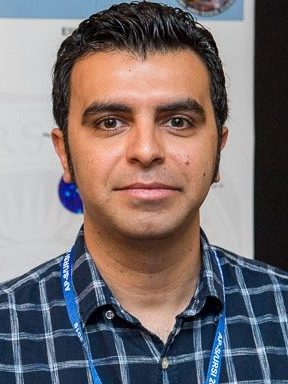Advancing AI research for plasma science, fusion, and sustainable energy.

Welcome to the Stanford Fusion and Plasma AI Research Center. We are at the forefront of revolutionizing fusion energy and plasma physics by harnessing the transformative power of artificial intelligence and machine learning.
Our interdisciplinary team harnesses the power of cutting-edge artificial intelligence technologies to advance the frontiers of research across multiple pivotal fields, including fusion energy, plasma science, optical computing and photonics, and sustainability.
By integrating expertise from diverse disciplines in physics, computer science, engineering, and agriculture and environmental science, we develop sophisticated AI-driven models and simulations that accelerate the discovery and optimization processes.
Harnessing AI to Transform Fusion and Plasma Research
Our vision for the future is driven by a commitment to expand AI in plasma research, ensuring that humanity reaps the benefits of these advancements and that these advantages are widely accessible. To support these objectives, our research focuses on three key areas:
Optimizing Plasma and Fusion Systems with AI
Leveraging advanced artificial intelligence, our team enhances plasma reactor design, effectively controls plasma instabilities, and boosts operational efficiency. AI-driven algorithms explore optimal reactor configurations, predict and mitigate disruptions in real-time, and streamline energy management and maintenance processes. This integration not only accelerates the development of reliable and efficient fusion technologies but also paves the way for sustainable and scalable energy solutions. By harnessing AI, we are advancing the future of clean energy through smarter, more resilient fusion systems.
Advancing Predictive Modeling
By leveraging sophisticated AI-driven simulations, our team can accurately forecast plasma behavior with unprecedented precision and speed. Traditional experimental trials in plasma science are not only time-consuming but also prohibitively expensive, often requiring specialized equipment and extensive resources. AI algorithms, including machine learning and deep learning models, analyze vast amounts of experimental and theoretical data to identify patterns and predict plasma dynamics under various conditions. These predictive models can simulate complex interactions within plasma environments, enabling researchers to explore a wide range of scenarios virtually before conducting physical experiments. This approach not only accelerates the research and development process but also significantly reduces costs by minimizing the need for iterative testing and trial-and-error methods.
AI Augmented Plasma Chemistry
Harnessing the power of artificial intelligence, our team is transforming plasma chemistry to optimize existing processes and discover innovative new chemistries for fuels, agriculture, and beyond. AI-driven algorithms analyze complex plasma interactions and vast datasets to predict reaction pathways, identify efficient synthesis methods, and fine-tune operational parameters. This enables the rapid development of advanced fuel formulations with higher energy densities and lower environmental footprints, as well as the creation of novel agricultural chemicals that enhance crop yields and sustainability. By integrating AI with plasma chemistry, we accelerate the discovery of cutting-edge solutions, reduce experimental costs, and address critical challenges in energy and food security. Our approach not only optimizes current technologies but also paves the way for breakthrough innovations that drive progress toward a more sustainable and prosperous future.
Join Us at the Intersection of AI and Fusion Energy and Plasma Science
We invite you to explore how our AI-centric approach is driving breakthroughs in fusion energy research and plasma science.
Leadership

Dr. Benjamin Wang
Co-Director of Stanford Plasma and Fusion AI Research Center

Professor Mark Cappelli
Co-Director of Stanford Plasma and Fusion AI Research Center

Dr. Hossein Mehrpour Bernety
Co-Director of Stanford Plasma and Fusion AI Research Center
Explore Publications
Inverse design of plasma metamaterial devices for optical computing
Jesse A. Rodriguez, Ahmed I. Abdalla, Benjamin Wang, Beicheng Lou, Shanhui Fan, Mark A. Cappelli
Inverse design of optical switch with meta-learning
Beicheng Lou, Jesse A Rodríguez, Benjamin Wang, Mark Cappelli, Shanhui Fan
Reconfigurable plasma-dielectric hybrid photonic crystal as a platform for electromagnetic wave manipulation and computing
Benjamin Wang, Jesse A. Rodríguez, Oliver Miller, Mark A. Cappelli
Plasma-fixed Nitrogen Improves Lettuce Field Holding Potential
Benjamin Wang, Qiyang Hu, Bruno Felix Castillo, Christina Simley, Andrew Yates, Brian Sharbono, Kyle Brasier, Mark A. Cappelli
2D kinetic-ion simulations of inverted corona fusion targets
William Riedel, Nathan Meezan, Drew Higginson, Matthias Hohenberger, Mark Cappelli
Inverse Design of Optical Switch Based on Bilevel Optimization Inspired by Meta-Learning
Beicheng Lou, Jesse Alexander Rodrigue, Benjamin Wang, Mark Cappelli, Shanhui Fan
Contact Us